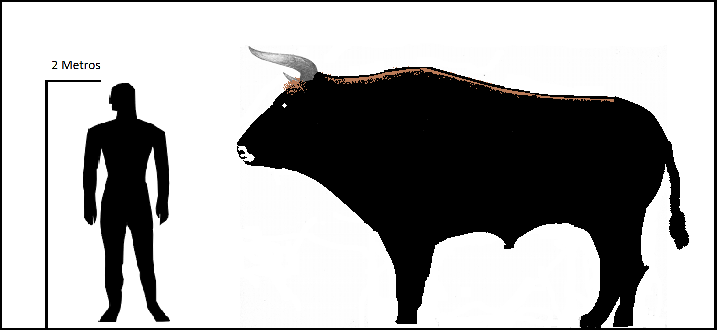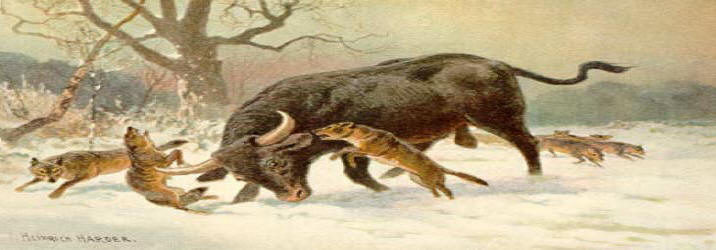Form & Function
The Aurochs were a massive herbivore that stood a minimum of
6 foot tall at the shoulder and weighed a minimum a ton. They
had massive inward facing horns and a white strip running down
their back (Faris 2010). They also had sexual dimorphism
of coat color. The males’ were black with th e
strip down their spine and the females and calves have a reddish
fur color. They moved about on for legs to find their food,
which is plant material because they are herbivores. They are
also ruminants. Ruminants have a special digestive system that allows
for the break down of plant material that otherwise would not be
able to get broken down(Hayes 2007). To learn about other
organisms that are ruminants like the giraffe click
here!
e
strip down their spine and the females and calves have a reddish
fur color. They moved about on for legs to find their food,
which is plant material because they are herbivores. They are
also ruminants. Ruminants have a special digestive system that allows
for the break down of plant material that otherwise would not be
able to get broken down(Hayes 2007). To learn about other
organisms that are ruminants like the giraffe click
here!
There are two possible common ancestores of of the Bos primingenus that later became domesticated. One is the Bos taurus which was later domesticated into the modern day cow. Their body is covered in short hair that can range in colors. They also have short necks with a dewlap that hangs below the chin and they have no upper incisors. Instead they have a thick layer called the dental pad (Dewey & Ng 2001). This dental pad and the way their jaw is formed is to help with the circular grinding formation needed in order to crush the coarse vegetation. The white tailed deer also have a dental pad to help them grind coarse vegetation. Want to learn more about this amazing animal? Then click here.
.jpg)
The second possible common ancestor is called the Bos indicus. These are
hump cattle, meaning that they have a hump over their shoulders.
Their head is relatively small compared to their body size, and they
also have a dewlap that hangs below the chin (Ajmone-Marsan 2010). What
separates the Bos indius from the Bos taurus is
that they have floppy ears and are also a little bit smaller. This
organism has adapted many ways to to withstand warm temperatures.
One adaption is the short hair coat which reflects many of the suns
rays, so the Bos indicus can eat out in the praries in the hot sun without suffering. Another adaption for
dealing with the warm tempeatures is loose skin. The loose skin increased the surface area available
for cooling which helps tremendously. One last adaption that the Bos
indicus has evolved is a lower internal body temperature when
in warmer weather(Brahman 200). Now that you know what these ancient bovines
looked like, I bet you want to know where they came from and how
they reproduced. Well, click the link at the bottom to find
out all about the history and reproduction of the Aurochs!
If you find this organisms very fascinating and want to learn more about them click here!
